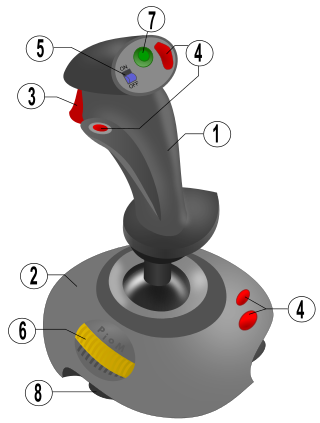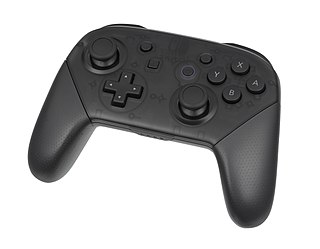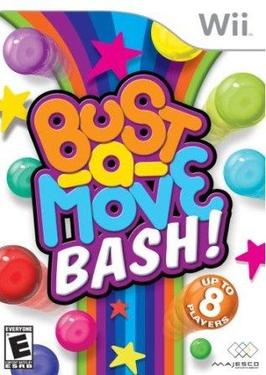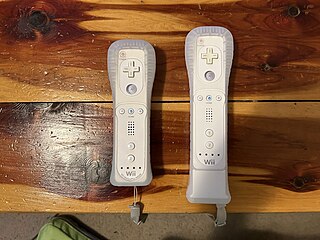Related Research Articles

A computer mouse is a hand-held pointing device that detects two-dimensional motion relative to a surface. This motion is typically translated into the motion of the pointer on a display, which allows a smooth control of the graphical user interface of a computer.

A joystick, sometimes called a flight stick, is an input device consisting of a stick that pivots on a base and reports its angle or direction to the device it is controlling. A joystick, also known as the control column, is the principal control device in the cockpit of many civilian and military aircraft, either as a centre stick or side-stick. It has various switches to control functions of the aircraft controlled by the Pilot and First Officer of the flight.

A game controller, gaming controller, or simply controller, is an input device or input/output device used with video games or entertainment systems to provide input to a video game. Input devices that have been classified as game controllers include keyboards, mice, gamepads, and joysticks, as well as special purpose devices, such as steering wheels for driving games and light guns for shooting games. Controllers designs have evolved to include directional pads, multiple buttons, analog sticks, joysticks, motion detection, touch screens and a plethora of other features.

Microsoft SideWinder was the general name given to the family of digital game controllers developed by Microsoft for PCs. The line was first launched in 1995. Although intended only for use with Microsoft Windows, Microsoft SideWinder game controllers can also be used with macOS, Mac OS 9 with third-party software, and Linux.

The Zapper is an electronic light gun accessory launched within the Nintendo Entertainment System (NES) in North America on October 18, 1985. It is a cosmetic redesign by Nintendo of America's head designer Lance Barr, based on Gunpei Yokoi's Video Shooting Series light gun (光線銃シリーズガン), which had been released in Japan for the Famicom on February 18, 1984. The Zapper requires compatible NES games, such as Duck Hunt, Wild Gunman, and Hogan's Alley. Its internal optical sensor allows the player to aim at a television set and accurately shoot at in-game targets.

A gamepad is a type of video game controller held in two hands, where the fingers are used to provide input. They are typically the main input device for video game consoles.

An analog stick, also known as control stick, joystick or thumbstick, is an input device for a controller that is used for two-dimensional input. An analog stick is a variation of a joystick, consisting of a protrusion from the controller; input is based on the position of this protrusion in relation to the default "center" position. While digital sticks rely on single electrical connections for movement, analog sticks use continuous electrical activity running through potentiometers to measure the exact position of the stick within its full range of motion. The analog stick has greatly overtaken the D-pad in both prominence and usage in console video games.

Bust-A-Move Bash!(known in Europe as Bust-A-Move) is a bubble shooter tile-matching video game released exclusively for the Wii, as part of the Bust-A-Move series. It is the first Bust-A-Move game released on a Nintendo console after Bust-A-Move 3000, released in 2003 on the GameCube.

In computing, a motion controller is a type of input device that uses accelerometers, gyroscopes, cameras, or other sensors to track motion.

The GameCube controller is the standard game controller for the GameCube home video game console, manufactured by Nintendo and launched in 2001. As the successor to the Nintendo 64 controller, it is the progression of Nintendo's controller design in numerous ways. The contentious M-shaped design of its predecessor was replaced with a more conventional handlebar style controller shape; a second analog stick was added, replacing the C buttons with a C stick and the X and Y face buttons, last seen on the Super Nintendo controller, were reintroduced; the shoulder buttons were changed to hybrid analog triggers. A wireless variant of the GameCube controller known as the WaveBird was released in 2002.

In computing, an input device is a piece of equipment used to provide data and control signals to an information processing system, such as a computer or information appliance. Examples of input devices include keyboards, computer mice, scanners, cameras, joysticks, and microphones.

Steam Machine is a discontinued series of small form factor gaming computers by Valve, designed to operate SteamOS to provide a game console-like experience. Several computer vendors were engaged with Valve to develop their own versions of Steam Machines for retail, offering additional options atop Valve's requirements such as dual-booting options with Microsoft Windows and the ability to upgrade the computer. Consumers could digitally purchase video games on their Steam Machine through Valve's namesake Steam storefront.

The Steam Controller is a discontinued game controller developed by Valve for use with personal computers running Steam on Windows, macOS, Linux, smartphones or SteamOS. The controller was designed not only for games developed for controller users, but also for games traditionally played with keyboard and mouse controls so that they can be played through the controller. It was released in November 2015 along with Valve's Steam Machine and discontinued in November 2019.

Joy-Con are the primary game controllers for the Nintendo Switch video game console. They consist of two individual units, each containing an analog stick and an array of buttons. They can be used while attached to the main Nintendo Switch console unit, or detached and used wirelessly; when detached, a pair of Joy-Con can be used by a single player, or divided between two as individual controllers. The controllers have been criticized for the tendency of the analog sticks to register inputs when not being touched, which is commonly referred to as Joy-Con drift.

The Smash Box controller is a custom arcade controller designed by Dustin Huffer and developed by Hit Box from 2014 to 2017. Specifically designed for competitive play of Super Smash Bros. Melee, the Smash Box controller replaces the GameCube controller's analog stick with a button layout. This controller may allow more precise and rapid input, though it has a steeper learning curve than the traditional controller. Moreover, the Smash Box controller may have various health benefits, as it puts less stress on the hands of its user. The Smash Box is currently a legal controller for major Super Smash Bros. and fighting game tournaments, with it and other all-button controllers finding more acceptance and use throughout the communities.

The Nintendo Switch Pro Controller is a video game controller developed by Nintendo and produced by various manufacturers for use with the Nintendo Switch console. It serves as an alternative to the Joy-Con controllers.
A battle royale game is an online multiplayer video game genre that blends last-man-standing gameplay with the survival, exploration and scavenging elements of a survival game. Battle royale games involve dozens to hundreds of players, who start with minimal equipment and then must eliminate all other opponents while avoiding being trapped outside a shrinking "safe area", with the winner being the last player or team alive.

The Xbox Adaptive Controller (XAC) is a video game controller designed by Microsoft for Windows PCs and the Xbox One and Xbox Series X/S video game consoles. The controller was designed for people with disabilities to help make user input for video games more accessible.
In video games, aim assist is a gameplay feature designed to help players with their aiming. It is commonly found in first-person shooter (FPS) games, and is an element particularly designed for players who use controller inputs, as opposed to a mouse and keyboard (MnK).
References
- ↑ Pedersen, Hilde; Refvik, Rein; Uy, Johnnadel; Sandnes, Frode (2020). Human Interaction and Emerging Technologies: Proceedings of the 1st International Conference on Human Interaction and Emerging Technologies. Springer. pp. 378–382. ISBN 978-3030256289.
- ↑ MacKenzie, Scott; Kauppinen, Tatu; Silfverberg, Miika (2001). CHI '01: Proceedings of the SIGCHI Conference on Human Factors in Computing Systems. Association for Computing Machinery. pp. 9–16. ISBN 978-1-58113-327-1.
- ↑ Jibb Smart (June 3, 2019). Introducing Flick Stick in DOOM. Event occurs at 0:19. Retrieved January 5, 2022.
- ↑ Wesley Leblanc (February 15, 2022). "How A Community Creator Helped Completely Revamp Fortnite's Gyro Aiming Controls". Game Informer . Archived from the original on February 15, 2022. Retrieved February 15, 2022.
- ↑ "How to set up Flick Stick in reWASD for different games?". rewasd.com. December 2, 2021. Retrieved February 24, 2022.
- ↑ JibbSmart (February 16, 2019). "JoyShockMapper 1.0.0". github.com. Retrieved February 24, 2022.
- ↑ Steven T. Wright (July 17, 2020). "Steam Implements Gyro-Based "Flick Stick" Controls". gamespot.com. Retrieved December 3, 2021.
- ↑ James Davenport (October 12, 2021). "Boomerang X brings gamepad control closer to mouse-aim more than ever". pcgamer.com. Retrieved December 3, 2021.
- ↑ Patrick Perrault (December 13, 2021). "Counter-Strike: Global Offensive Now Has Flick Stick". techraptor.net. Retrieved December 16, 2021.
- ↑ Wesley Leblanc (February 15, 2022). "Fortnite: Gyro Aiming And Flick Stick Controls Have Been Added To All Modes In The Game". Game Informer . Archived from the original on February 15, 2022. Retrieved February 15, 2022.
- ↑ @jibbsmart (September 20, 2022). "Jibb Smart on Twitter" (Tweet). Retrieved 2022-09-20– via Twitter.
- ↑ Jibb Smart [@JibbSmart] (2023-02-16). "Call of Duty Modern Warfare II and Warzone 2.0 have flick stick 🤯
And huge upgrades to the settings:
- Steadying
- Custom sensitivity scaling for different zoom levels
Let's dig in... 🧵" (Tweet). Retrieved 2023-04-21– via Twitter.